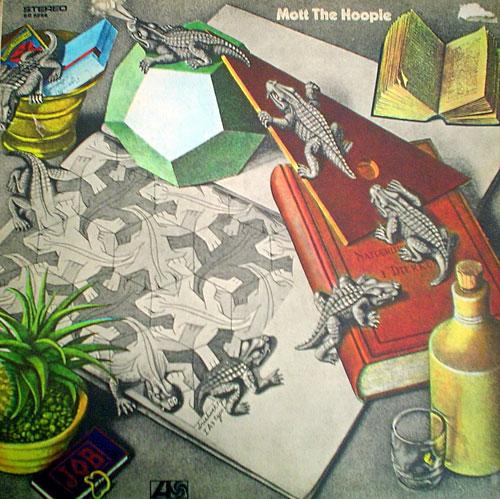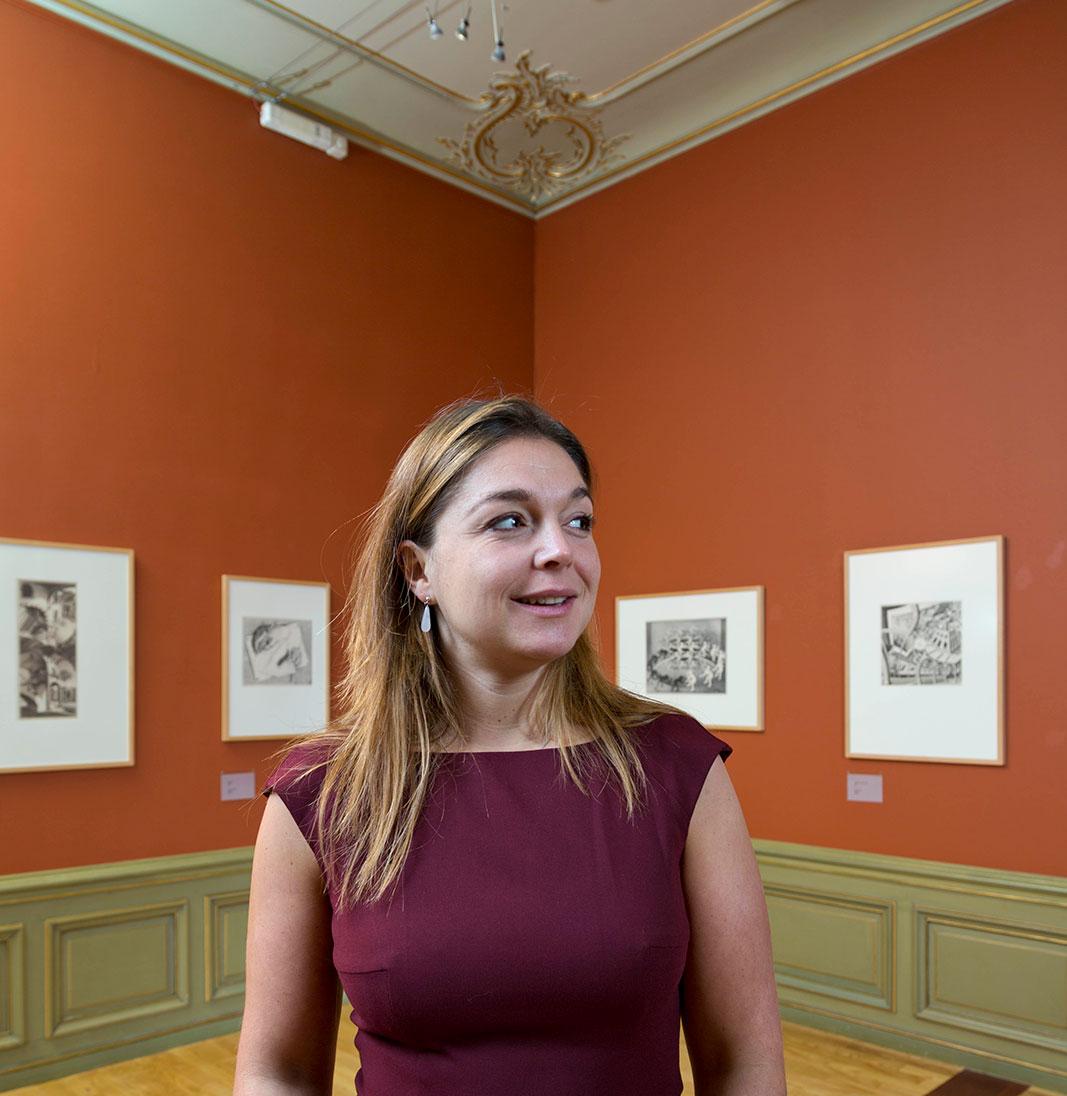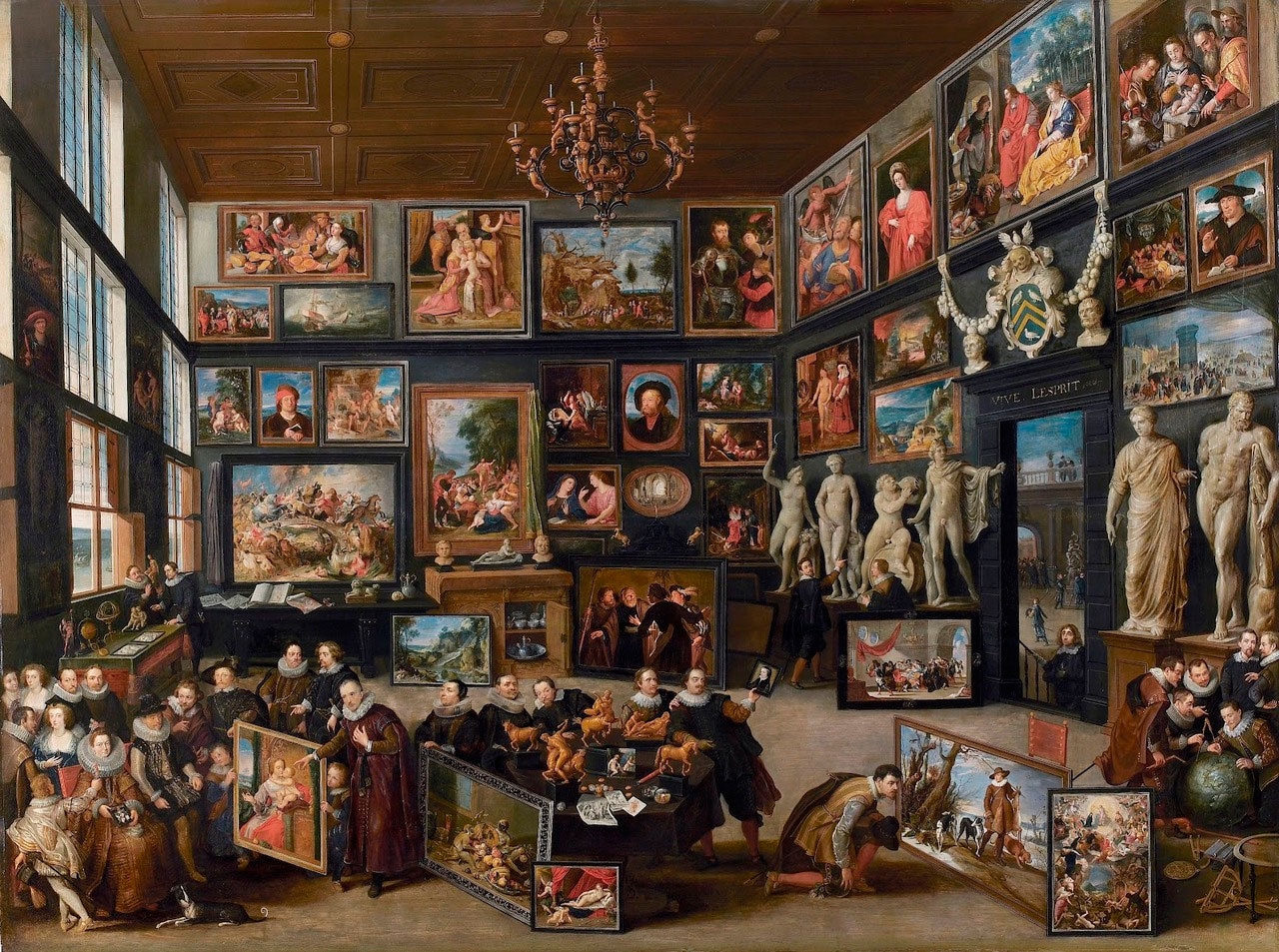
During the 17th century it became fashionable among the elite to create ‘cabinets of curiosities’. Escher had such a room too, albeit a small 20th-century one. It doesn’t exist anymore, but fortunately we still have the photos.
‘Cabinets of curiosities’ in the 17th century were overflowing with a hotchpotch of paintings, pictures, scientific instruments, natural history items and curios. We know what these rooms looked like because various 17th-century masters specialized in portraying cabinets of curiosities. The collection owner would use his room to exhibit his interests, though primarily his wealth, his sense of style and his erudition. Collecting to impress. You see, only a veritable homo universalis would be capable of creating a good cabinet of curiosities. A successful collection constituted an encyclopedic reflection of creation and creativity. In the closed environment of his own collection, the owner could briefly imagine himself lord and master of the world. After all, the best of earthly life was within his reach.
The cabinet of curiosities is the precursor to museums as we now know them, with one significant difference: they were not open to the public. The collector often granted access to visitors, but only those visitors from his network that he was keen to impress. The curious baker from around the corner was not welcome. Over time this changed, and various collections that had begun as cabinets of curiosities expanded to become public collections and museums.
Mood board avant la lettre
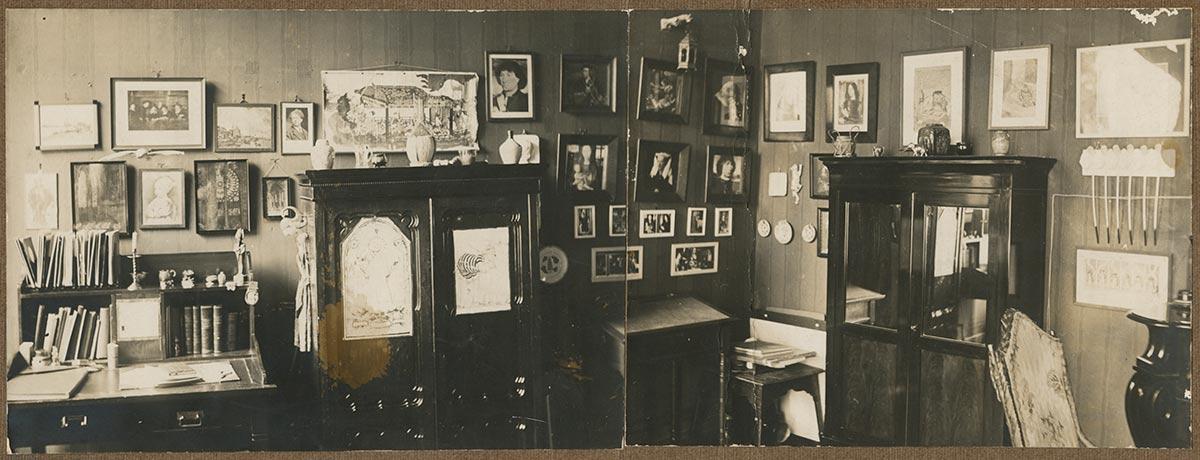
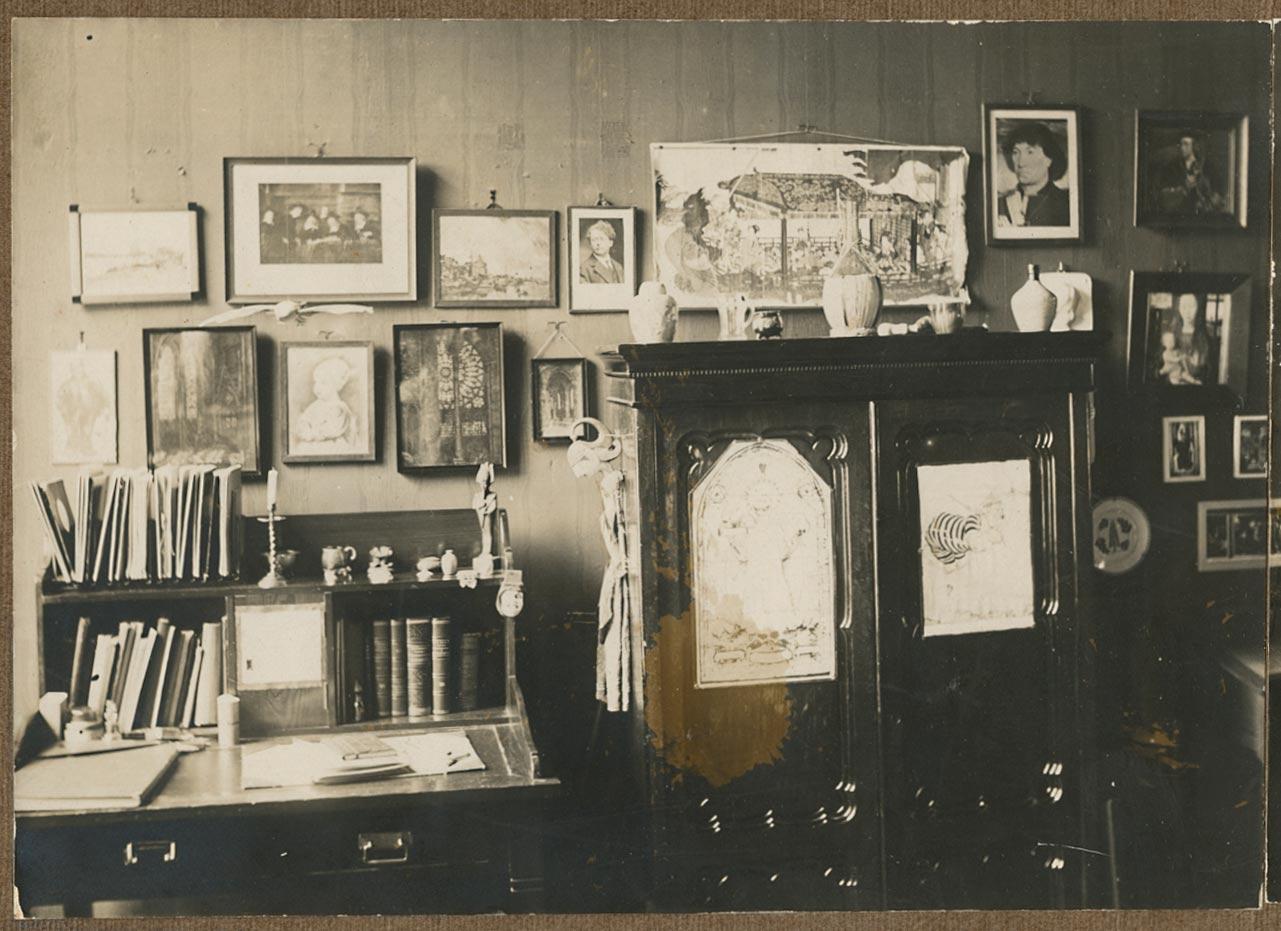
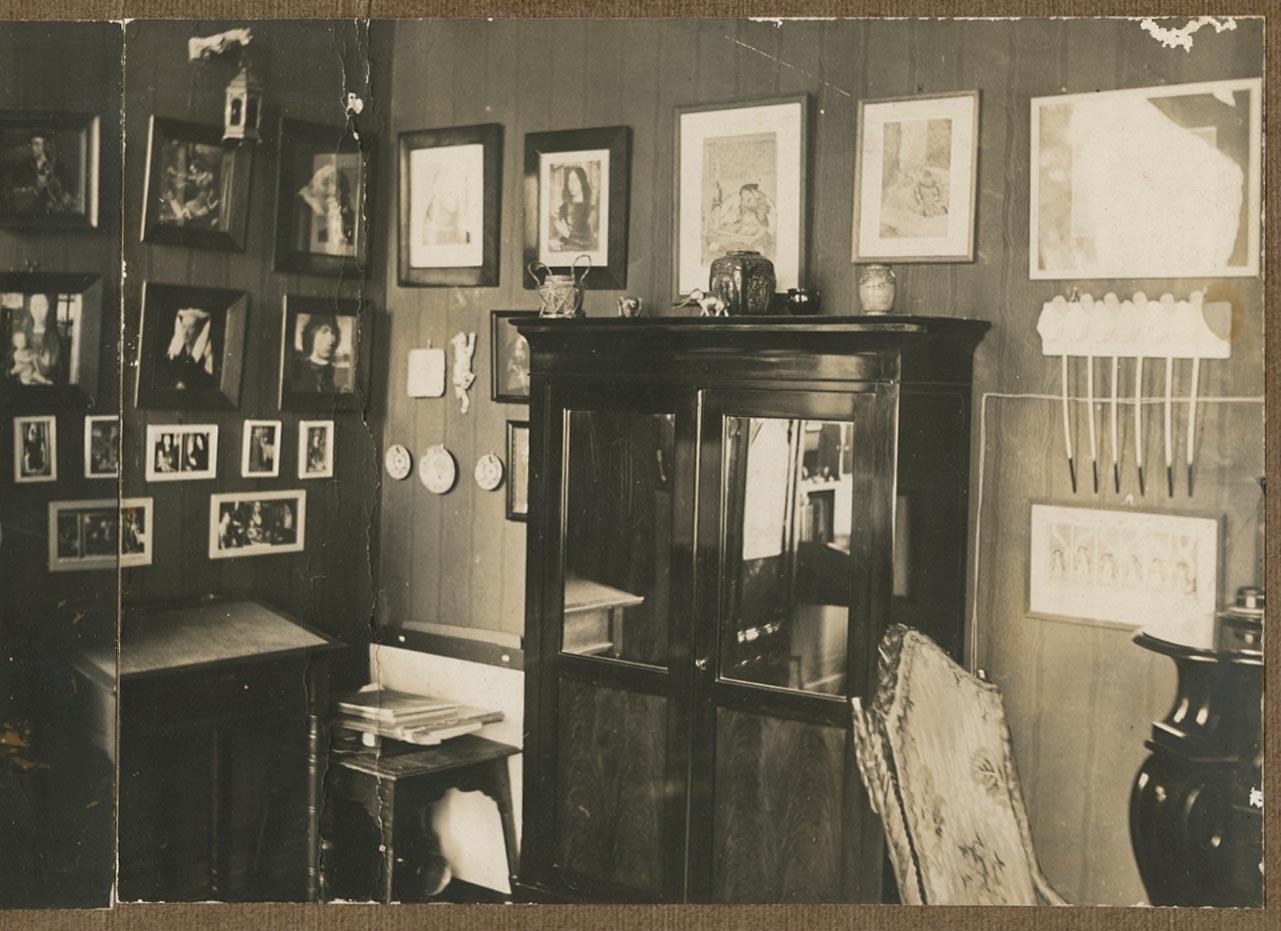
Escher, too, had his own cabinet of curiosities. Admittedly on a tiny scale, but still. When he was very young he would collect artefacts and reproductions of works he thought were beautiful or inspiring and would hang them in his own room with a great deal of care. The wonderful thing is that a photo of that room is still extant, taken in 1915 when he lived in Arnhem. The room was a mood board avant la lettre, comparable to Pinterest. An enthusiastic collection of everything that Escher found fascinating, admired and was inspired by at the age of 17.
From great masters to ginger jars
We see a striking quantity of reproductions of Early Netherlandish and Flemish paintings. Escher was clearly a fan of Hans Memling and Jan van Eyck - several reproductions of whose works were framed - but also of Hans Holbein the Younger, Albrecht Dürer and Rembrandt. In addition we see plenty of Japanese paintings, a Wayang puppet, some solid wood furniture and a jumble of ginger jars and vases. The light seeps in from the left, shining gracefully on a well-stocked desk. Such desks now strike us as having a terribly limited amount of space, but we can attribute that to the generation gap; Escher would probably have enjoyed writing his letters there and used it for the purposes of drawing.
So what?
You might well be wondering what the relevance is of all these trivial observations about an interior? This isn’t a home and lifestyle magazine, is it? The answer is that the interior provides us with unprecedented insight into the young Escher. An interior is ultimately a reflection of who you are. As it is here, evidently.
Read more about this in the sequel to this article next month.
More stories about Escher
